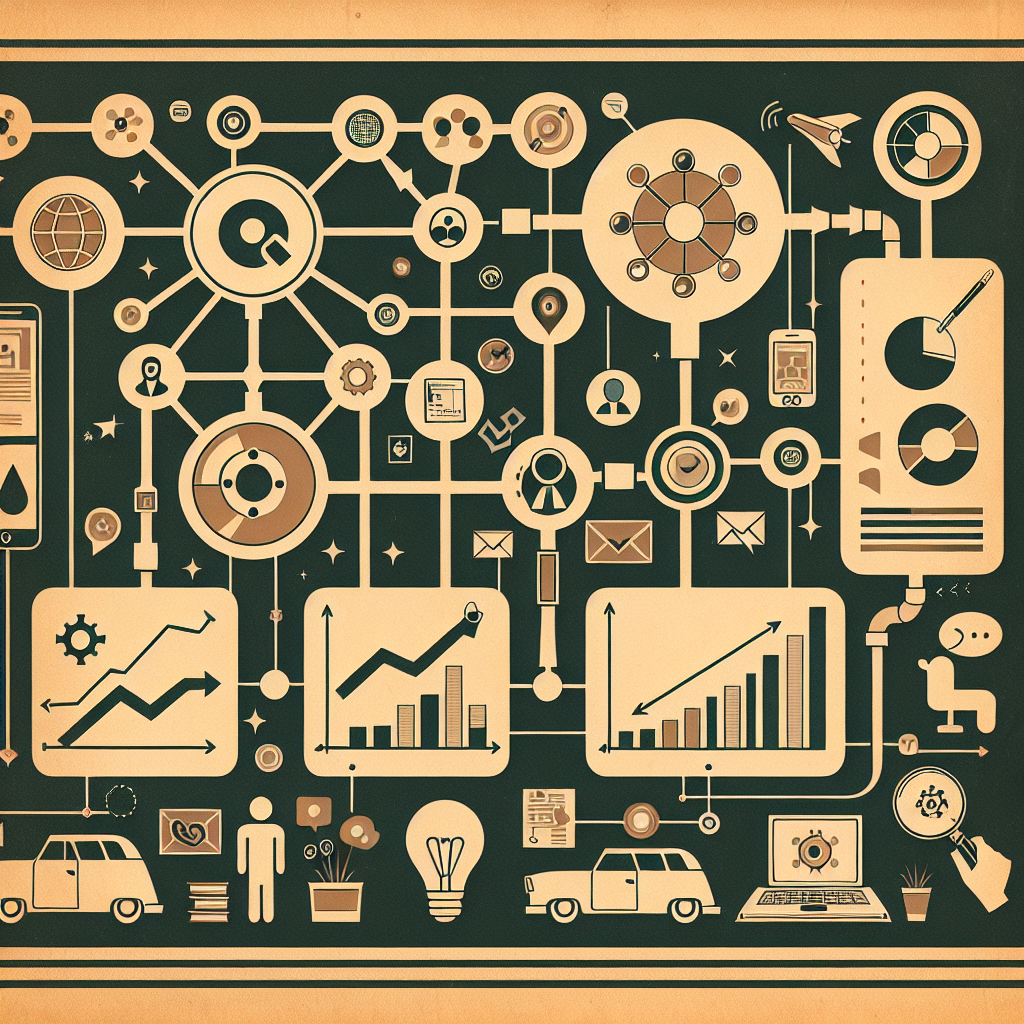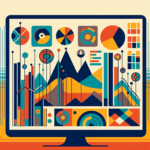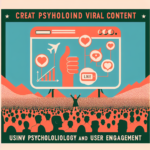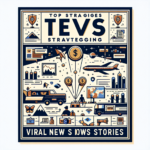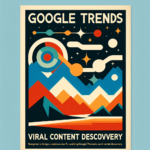Introduction to Predictive Analytics in User Behavior
Hello there! Okay, so let’s imagine a magic crystal ball that can predict your users’ future behaviors. Exciting, isn’t it? Well, I can’t promise magic, but that’s pretty much what predictive analytics do! Can we forecast how users will interact with our website or app? Can we anticipate which product they’ll buy or what content they’ll share? Let’s get started!
As we explore, we will unravel the concept of predictive analytics and its role in understanding user behavior. We will examine how it works, the handy tools you can use, and look into practical applications in marketing.
No spoilers, but keep reading for some real-world examples and thoughts beyond the basics, looking into advanced analytical techniques and data points to consider. We’ll even ponder on if we can predict ‘viral’ content and discuss the intricacies of predicting trends in data analysis. So, are you ready to uncover the secret to predicting your user’s next move? Let’s go!
Exploring Predictive Analytics for User Behavior
Understanding Predictive Analytics
Predictive analytics focuses on using historical data, statistical algorithms, and machine learning techniques to predict future outcomes. It’s about analyzing past user interactions to anticipate future behaviors.
Key benefits include:
- Improved decision-making
- Enhanced user experience
- Increased conversions
How Predictive Analytics Works
Predictive analytics operates on a cycle of collecting data, analyzing the information, and then making informed predictions. Here’s a simplified breakdown:
- Data Collection: Gather data from various sources like website interactions, social media, purchase history, etc.
- Data Analysis: Use algorithms to identify patterns or correlations in the data.
- Prediction Modeling: Build models to forecast future user behavior based on analyzed data.
Tools Used in Predictive Analytics
There are several tools available to help businesses apply predictive analytics:
| Tool | Description |
|---|---|
| Google Analytics | Tracks website traffic and provides useful insights about visitors. |
| Hootsuite | Provides analytics for social media platforms. |
| IBM Watson | Offers AI-driven data analytics for more complex analysis needs. |
Applying Predictive Analytics in Marketing
Marketers use predictive analytics to tailor their strategies and improve ROI. Here’s how:
- Personalized Campaigns: Deliver content that resonates with a specific audience segment.
- Customer Segmentation: Group users based on behavioral similarities for targeted marketing.
- Churn Prediction: Identify customers who are likely to leave and deploy retention strategies.
Real-World Example
Netflix utilizes predictive analytics to recommend shows or movies you might like, based on your viewing history. This approach enhances user satisfaction and keeps viewers engaged.
Learn more about Netflix’s use of predictive analytics in this Forbes article.
By leveraging predictive analytics, companies can better anticipate customer needs, refine marketing strategies, and ultimately boost business results.
Taking Predictive Analytics Further: Advanced Methods of User Behavior Analysis
Expanding Your Predictive Analytics: Data Points to Consider
When working with predictive analytics and forecasting user behavior, remember that the breadth of your data can greatly impact the accuracy of your predictions. Unique data points can provide different perspectives on user behavior:
- Demographic Data: Information about age, gender, location, and occupation, among others, can help create a more detailed user profile.
- Psychographic Data: This includes user’s attitudes, interests, and lifestyle preferences which can be useful for personalizing campaigns.
- Behavioral Data: Detailed interactions of the user with your site or product. This could be click patterns, page views, time spent on page etc.
Advanced Analytical Techniques in Predictive Analytics
To further enhance the accuracy of your predictive models, consider using advanced statistical and machine learning techniques:
- Regression Analysis: This involves formulating relations between variables. For example, it could be used to predict sales based on website traffic.
- Neural Networks: These algorithms simulate human brain’s learning process to uncover complex patterns in data.
- Decision Trees: A model that breaks down a dataset into smaller subsets while at the same time constructing an associated decision tree.
Challenges in Implementing Predictive Analytics
While predictive analytics can be powerful, it’s important to consider the challenges associated with its implementation:
| Challenge | Description |
|---|---|
| Data Privacy | Companies need to ensure they’re complying with data privacy laws and guidelines when collecting and analyzing user information. |
| Data Quality | Analysis is only as good as the input data. Poor quality data can lead to incorrect predictions and misguided strategies. |
| Resource Intensive | Building and maintaining predictive models often requires considerable time and expertise. |
For more insights on the challenges of implementing predictive analytics, read this Sisense article.
Keeping Predictive Analytics Actionable
Given the potentially overwhelming amount of information predictive analytics can generate, it’s vital to keep focused on actionable insights:
- Setting Clear Goals: Stay clear about what specific question you’re trying to answer with your analysis. This will provide direction to your data collection and analysis efforts.
- Regular Reviews: As markets and user behavior can change over time, it’s important to review and revise your predictive models regularly to reflect the current reality.
- Result Interpretation: Translating the output of your model into actionable business strategies can be challenging but is essential for making the most out of your predictive analysis.
Can Viral Content Be Predicted?
Understanding Viral Content
Viral content is media that spreads quickly and widely across the internet, often through social sharing. While predicting viral content can seem like trying to forecast the weather, understanding the factors that contribute to virality can provide insight into whether it can be predicted.
Factors Influencing Virality
The unpredictability of human behavior makes it difficult to guarantee that content goes viral, but certain characteristics can increase the likelihood:
- Emotional Engagement: Content that evokes strong emotions—such as joy, surprise, or anger—tends to be shared more frequently.
- Relatability: When content resonates on a personal level, it compels people to share it with others within their networks.
- Timeliness: Content that addresses current events or trends is more likely to capture the public’s attention.
- Incentives to Share: Providing reasons for sharing, such as a reward or social recognition, can boost virality.
The Role of Predictive Analytics in Viral Content
While predicting the exact virality of content remains a challenge, predictive analytics can enhance the odds:
- Trend Analysis: Analyzing trending topics can guide content creation in line with what audiences are interested in at the moment.
- A/B Testing: Testing variations of content can help in understanding which elements are more engaging and likely to be shared.
- Influencer Collaboration: Working with influencers who have a history of successful content may improve the chances of virality.
Social Media Algorithms
Understanding the mechanisms behind social media platforms can provide additional insights into boosting content visibility:
- Platform Preferences: Algorithms that prioritize certain types of content (like video on Facebook) can shape what gets more visibility and virality.
- User Interaction Data: Engagement metrics such as likes, shares, and comments play a vital role in content being pushed to wider audiences.
Ethical Guidelines
Attempting to predict and create viral content must also consider ethical guidelines:
- Authenticity: Content should remain true to the creator’s voice and values rather than solely aiming for virality.
- Privacy Concerns: Utilizing user data for predictive purposes must adhere to privacy laws and regulations to maintain trust.
For more information on what makes content go viral, you might find this HuffPost article insightful.
Predicting Trends with Data Analysis
Data’s Role in Understanding Trends
To anticipate trends, businesses rely on data analysis to understand potential future developments. This involves recognizing patterns within collected data to forecast what might happen next. Here’s how it’s typically done:
- Trend Analysis: Identifies patterns in data over a certain period to determine long-term movements.
- Sentiment Analysis: Utilizes natural language processing to understand public opinion on social media or in reviews.
- Predictive Modeling: Uses algorithms to simulate different scenarios and their outcomes.
Tools for Trend Prediction
Many tools facilitate trend prediction, beyond those used exclusively for predictive analytics:
| Tool | Description |
|---|---|
| SurveyMonkey | Collects and analyzes survey data to gauge customer sentiment. |
| Tableau | Visualization software that helps identify patterns and trends in complex datasets. |
| Google Trends | Analyzes the popularity of top search queries across various regions and languages. |
Real-World Applications
Several industries leverage trend prediction to make strategic decisions:
- Retail: Uses sales data to anticipate seasonal demands and optimize inventory.
- Finance: Employs market sentiment analysis to predict stock price movements.
- Technology: Analyzes user feedback and usage data to predict the adoption of new features or releases.
Challenges in Trend Prediction
Predicting trends is far from straightforward and comes with its set of challenges:
| Challenge | Description |
|---|---|
| Data Overload | Distilling actionable insights from vast data volumes is often complex and time-consuming. |
| Rapid Change | Trends can evolve quickly, making it difficult to stay ahead using static models. |
| Bias in Data | Inherent biases in data sources can skew predictions if not corrected. |
For further insights on the complexities of data-driven trend prediction, this McKinsey article could be beneficial.
Wrapping Up Predictive Analytics for User Behavior
Exploring the scope of predictive analytics reveals its vast application in understanding and forecasting user behavior. Leveraging historical data, machine learning, and statistical algorithms, businesses have been improving decision-making processes, user experiences, and conversion rates.
Notably, TV giants like Netflix use such methods for recommending shows to their users, thus keeping their viewers engaged. As businesses continue to focus on user behavior prediction, more data points and advanced analytical techniques come into play. This helps create a comprehensive user profile and accurate analytics model. However, the complexity and resource intensiveness of such methods along with concerns of data privacy and quality pose challenges to widespread adoption.
Success in creating viral content, predicting trends, and implementing user-driven strategies primarily hinges on a thorough understanding of predictive analytics. This includes ethical guidelines, practical applications, and the management of associated challenges.
Frequently Asked Questions – FAQs
What is predictive analytics?
Predictive analytics uses historical data, statistical algorithms, and machine learning techniques to forecast future outcomes. It allows businesses to anticipate user behavior based on their past interactions.
How can predictive analytics improve my business?
Predictive analytics can improve decision-making, enhance user experience, increase conversion rates, and tailor marketing strategies to boost return on investment.
What analytical tools can assist in predictive analytics?
Google Analytics, Hootsuite, and IBM Watson are among the tools available for predictive analytics. They provide insights on website traffic, social media platforms, purchase history, and more complex analysis.
Can you predict if content will go viral?
While it’s quite challenging to predict the virality of content with certainty, predictive analytics can increase the odds by analyzing trending topics, performing A/B testing of content variations, and collaborating with successful influencers.
What challenges could an organization face while implementing predictive analytics?
Organizations can face challenges with data privacy compliance, ensuring the quality of input data, and resource intensiveness in building and maintaining predictive models.
